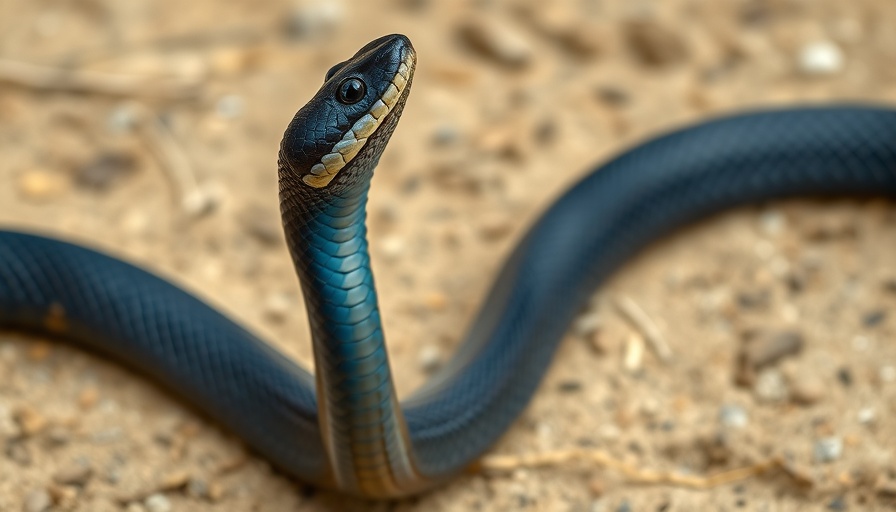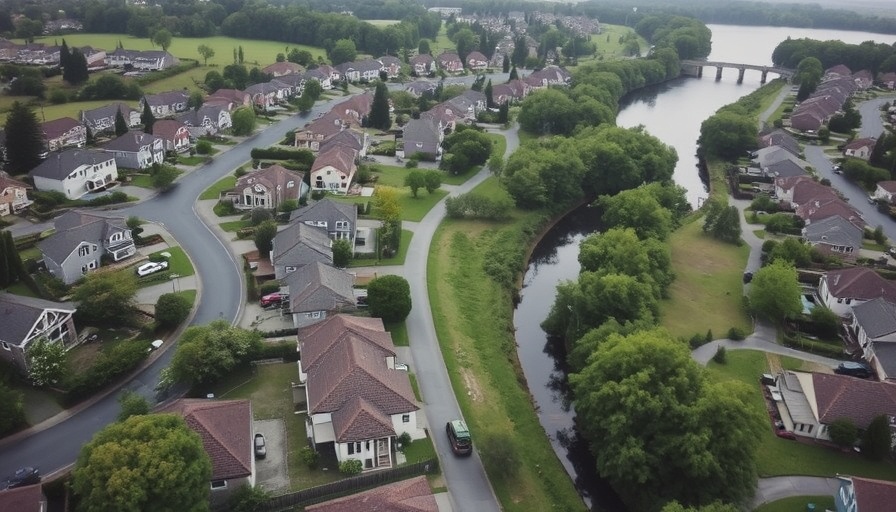
Making a Comeback: The Indigo Snake's Revival in Florida
The indigo snake, a stunning creature native to Florida, has long been recognized for its captivating beauty and ecological significance. Typically reaching lengths of up to eight feet, this snake isn’t just another forest dweller; it plays a crucial role in maintaining the balance of its ecosystem by preying on venomous snakes. Unfortunately, due to habitat loss and other environmental pressures, the indigo snake has become rare, sparking concern among conservationists and local wildlife enthusiasts alike. Fortunately, a dedicated conservation program at the Central Florida Zoo and Botanical Gardens has initiated a passionate effort to return these magnificent reptiles to their rightful home in North Florida.
In the video Central Florida zoo program returns indigo snakes to North Florida wild, the conversation centers around the importance of the indigo snake's return, prompting deeper analysis of conservation efforts in our ecosystems.
The Role of the Central Florida Zoo
At the heart of this resurgence is a specialized center located in Eustis, where the conservation program thrives. With a mission focused on breeding and nurturing indigo snakes before releasing them back into their natural habitats, the zoo has been a beacon of hope for endangered wildlife. Over the last nine years, this noble program has successfully released more than 200 indigo snakes, with 42 of them finding their way back to the wild just this season alone. This remarkable initiative not only bolsters the local indigo snake population but also reintroduces a sense of wonder and connection for local residents who may have once seen these snakes roam freely.
Why Should We Care About Indigo Snakes?
The indigo snake is not merely a beautiful species; it embodies a crucial component of the Florida ecosystem. Known to primarily feed on venomous snakes, its presence helps to stabilize the environment, ensuring that prey and predator populations remain in harmony. The decline of this remarkable species is alarming; it hints at deeper issues with the habitat itself. As the Eastern indigo snake faces dwindling numbers, it symbolizes the broader challenges wildlife in Florida confronts.
Historical Context: Indigo Snakes in Florida
Historically, Florida was home to thriving populations of indigo snakes, evident in generations of reports from residents who used to frequently encounter these creatures in their backyards. With urbanization and habitat encroachment, however, these sightings have diminished, leaving many to question what has happened to this iconic snake. Conserving the indigo snake means preserving a piece of Florida's natural heritage, echoing the tales of the land's past and the importance of wildlife in our cultural narrative.
A Community Driven Effort
For many local residents and wildlife enthusiasts, the indigo snake holds sentimental value. Stories of past encounters have woven a rich tapestry of community lore, bonding families and generations over the shared experience of their natural surroundings. As this conservation program fosters a sense of community stewardship, it encourages individuals to take part in protecting local wildlife and promotes a deeper appreciation for nature.
Future Outlook: Biodiversity in Balance
Looking to the future, the efforts of the Central Florida Zoo highlight an important opportunity for conservation efforts in Florida and beyond. As successful breeding programs continue and local communities actively engage in these initiatives, there is hope for a rebound in the indigo snake population. This also presents an opportunity to inspire broader conservation actions, exemplifying how community involvement can effect change, aligning local interests with biodiversity goals.
Actionable Insights: How You Can Get Involved
Each of us has a role to play in protecting Florida’s unique wildlife. Local residents can participate in or volunteer for conservation programs, attend informative talks hosted by organizations like the Central Florida Zoo, or even advocate for responsible land use. By engaging with local wildlife education initiatives, you help sustain the environment for future generations and foster an appreciation for Florida's natural wonders.
In conclusion, reflecting on the insights gained from the discussion in Central Florida zoo program returns indigo snakes to North Florida wild, we see that there’s a pressing need to protect the indigo snake, a vital species that has faced alarming decline. The efforts being championed through dedicated conservation programs signal emerging hope, inspiring both local residents and travelers to become guardians of wildlife. Together, we can ensure that future generations will have the opportunity to witness the indigo snake thrive once more in Florida’s vibrant ecosystems. Therefore, consider learning more about wildlife conservation and finding ways to support these efforts. Your engagement could make all the difference in helping restore balance to our natural habitats.
 Add Row
Add Row  Add
Add 






Write A Comment